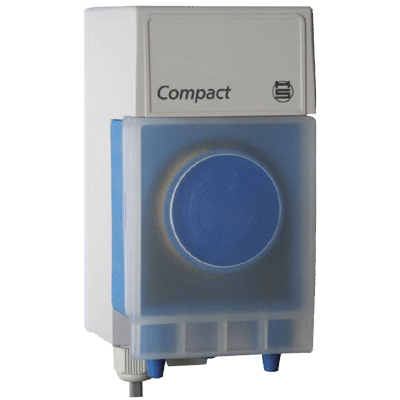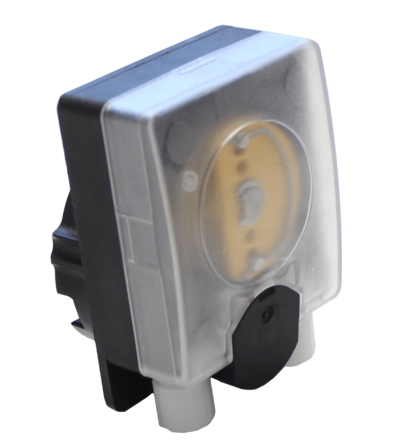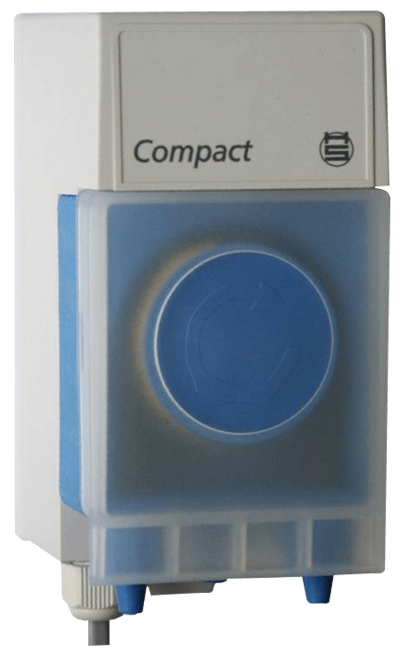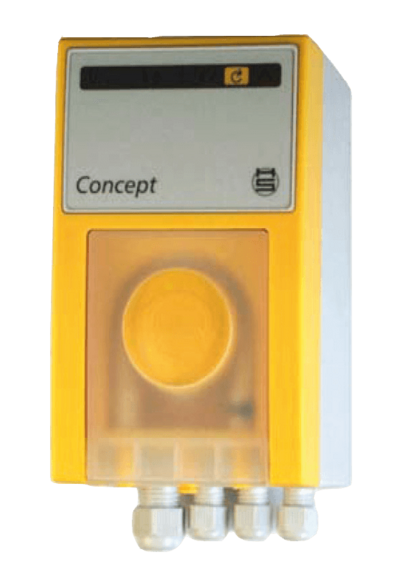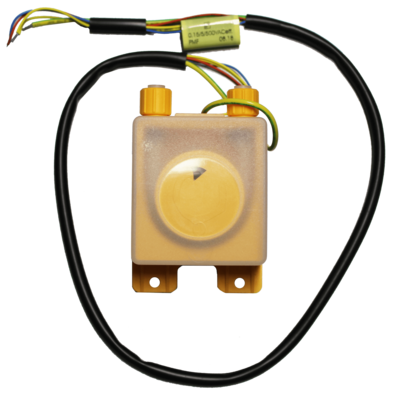Extensions
for small wastewater treatment plants
If increased demands are placed on the cleaning performance, our two clarification systems KLARO and KLARO One can be extended by further purification stages.
Possible extensions:
Nitrogen removal
7 years of extensive research and development - today we are PIA certified. This certificate shows the effectiveness of nutrient removal in our wastewater treatment systems.
It shows how the already good results in the standard test procedure can be further improved by selecting the "D+" program in the control system or by adding a liquid carbon source (C). To this end, our wastewater treatment plant was tested with the two alternative modes of operation over several weeks at the PIA testing institute after successful CE testing.
Nitrogen is a normal component in our wastewater treatment plants, but too much nitrogen unbalances the ecosystem in the water. With a simple reprogramming of our KLARO control.S and M controls we create a constant effluent value below 10 mg/l.
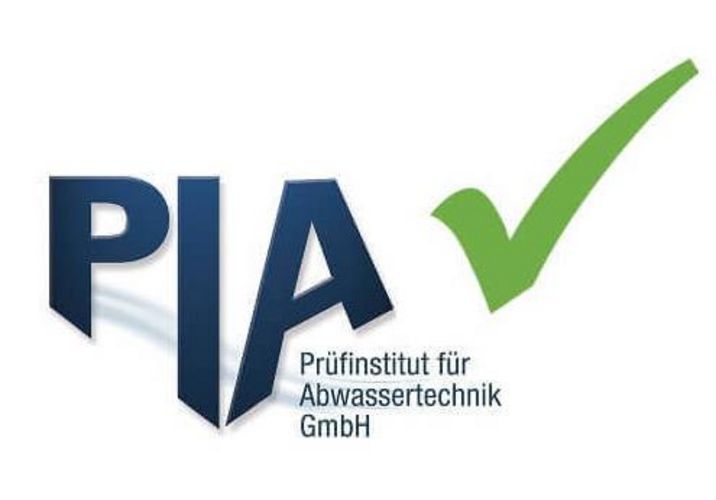
Features of "D+"
- Improvement is achieved by changing the sequence of purification steps; first nitri phase, then deniphase. The necessary carbon is added via a short intermediate feed with wastewater from the primary clarifier
- The program option is available in all Control.S and .M controllers
- No additional components are required
- On average Nges < 10 mg/l were achieved with this system
Features of the C-dosing
- Improvement is achieved by selective addition of a nutrient solution (C source) during the deniphase
- For this purpose, the plant must be equipped with the KLARO C-module
- Additional effort compared to "D+" - but even better and more stable values - moreover, readjustments can be made more effectively
- On average, Nges < 5 mg/l and Pges < 2 mg/l were achieved
- Works also at low water temperatures <12°C
- Alternative method for P-elimination, if classical precipitants with aluminum and iron are not allowed (otherwise these are to be preferred)
Phosphate Precipitation
with the KLARO P module
Part of the phosphate contained in the wastewater is absorbed by the bacteria. The remaining phosphate can be reduced to a minimum by means of chemical precipitation. This is easily and reliably achieved with the KLARO P modules. A dosing pump in the control cabinet automatically and selectively doses a precipitant directly into the aeration tank. Only small quantities are required for this. The precipitant forms an insoluble compound with the phosphate, which settles well in the tank with the sludge. Depending on the requirements, we offer different module sizes and a wide range of accessories. The P-value can be measured in the outlet and the dose can be adjusted via the control system if necessary. With this method, limit values of Pges < 1 mg/l can be maintained.
Advantages
- Simple and efficient
- Cleaning performance tested and certified
- Many years of practical experience
Carbon Dosing
with the KLARO C-Modul
Carbon can be added to the activation stage to compensate for a nutrient deficiency. This can be a problem-solving measure in the case of extreme underload phases or unfavourable wastewater composition.
A dosing pump in the control cabinet automatically doses a special nutrient solution directly into the aeration tank. Only small quantities are required for this. The nutrient solution is completely biodegradable. Depending on the requirements, we offer different module sizes and a wide range of accessories. The dose can be adjusted via the control unit.
With this method a desired amount of activated sludge can be kept stable in the system, even if there is no wastewater inflow at all for months. Or in the case of incomplete denitrification due to natural C deficiency and N oversupply, the imbalance can be compensated to achieve the purification target.
Advantages
- Simple and efficient
- Cleaning performance tested and certified
- Many years of practical experience
Wastewater disinfection
A well-functioning biological treatment system reduces the faecal germs contained in wastewater considerably (by a factor of about 1000). With a downstream additional disinfection stage, the remaining germs can be eliminated to a minimum. We offer two alternative technologies for this purpose: Disinfection with UV light or by chlorination.
Desinfection with the KLARO UV-Modul
The use of ultraviolet light (UV) is an effective and user-friendly process. The UV light destroys the structure of DNA and inactivates viruses and bacteria within seconds without leaving residues, harmful by-products or odour.
KLARO UV modules consist of a submersible pump, a stainless steel UV reactor and a ballast. KLARO offers UV systems in various sizes and designs. These can be installed in a tank or dry in a technical room. The mode of operation can be time-controlled or level-controlled.
Advantages
- Generally accepted and widely used technology
- No residual products in waste water
- Easy to maintain
- Cleaning performance tested and certified
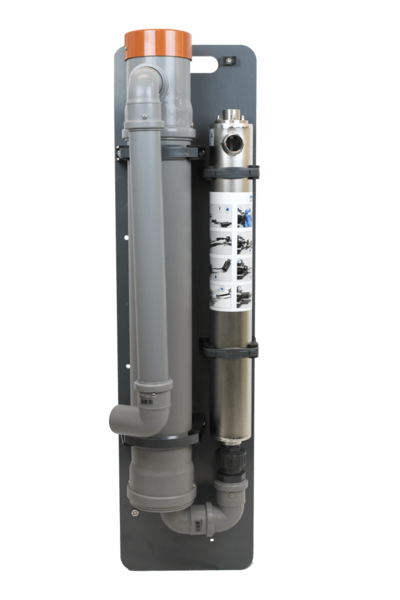
Desinfection with the KLARO e-chlorination-Modul
The addition of chlorine to the discharge water is a robust and reliable method of disinfection. Chlorine diffuses through the cell wall of the bacteria and destroys the enzymes, which leads to the killing of the microorganisms. In addition, chlorine prevents re-infection of the waste water due to its depot effect.
The KL e-chlorination module is a self-developed system that is mostly used outside Germany. It consists of a sensor unit, dosing unit and chlorine contact tank. Commercially available chlorine bleach is used as disinfectant. The sensor unit ensures precise dosing, exactly as required. Thus, an extremely effective disinfection is achieved with minimum residual chlorine content.
Advantages
- High operational reliability
- Precise dosing, no risk of over- or underdosing
- Easy to maintain
- Cleaning performance tested and certified
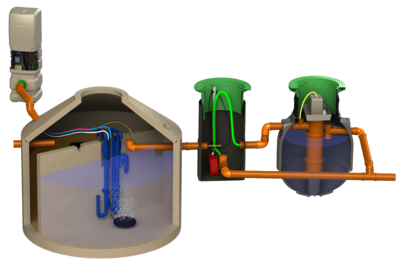
Re-use
with the KLARO Re-use module
The Re-use module is a KLARO development for the reuse of wastewater. The module consists of two stages: a fast sand filtration (sand filter module) and a disinfection (e-chlorination module). The treated industrial water is stored directly in the chlorine contact tank. The industrial water is mostly used for irrigation. The re-use module is suitable for smaller plants up to a maximum of approx. 50 PE. It is mostly used in dry, hot countries and is a sensible alternative to the rainwater cistern that is common in our country.
ADVANTAGES
- All wastewater generated can be reused on site
- Service water is available daily - no need to wait for rain
- Simple and reliable
- Cleaning performance tested and certified
Sandfiltration
with the KLARO Sandfilter-Modul
A downstream sand filter is used for further removal of suspended solids in the wastewater treatment plant effluent. They are often also included as a "police filter" or additional safety stage.
The KL Sand Filtration Module is a self-developed system for rapid sand filtration of biologically treated wastewater. This is pumped through a double-layer filter medium, whereby solids are retained. Subsequently, the filter is cleaned in a backwash phase and collected solids are returned to the clarifier. The special feature of our KLARO sand filter module is its small, compact design and its ability to clean or backwash itself.
The sand filter module is suitable for smaller plants up to a maximum of approx. 50 PE.
ADVANTAGES
- Additional operational safety
- Small and compact
- Automatic backwash
- Cleaning performance tested and certified

KLARO WebMonitor®
The intelligent remote monitoring
The KLARO WebMonitor® is an internet portal (www.klaro-webmonitor.eu), that enables maintenance companies and operators to monitor small wastewater treatment plants and sewage treatment plants online - no matter where they are. The small wastewater treatment plant is queried daily and it reports all by itself if something is wrong - for sure!
The KLARO WebMonitor® takes over the daily checks required by law and automatically saves the plant data once a month. The operator is thus relieved of his monitoring duties.
In the event of a malfunction at the plant, the KLARO WebMonitor® immediately reports the malfunction - via SMS or email - to the addresses stored in the system.
In the next step, the partner can actively intervene in the plant by calling up the plant control system via the Internet portal. All events are automatically stored in the KLARO WebMonitor® and made available for download.









